These boots aren't made for walking: how to walk in ski boots
Walking in ski boots really is as difficult as it seems – here’s how to do it without falling over
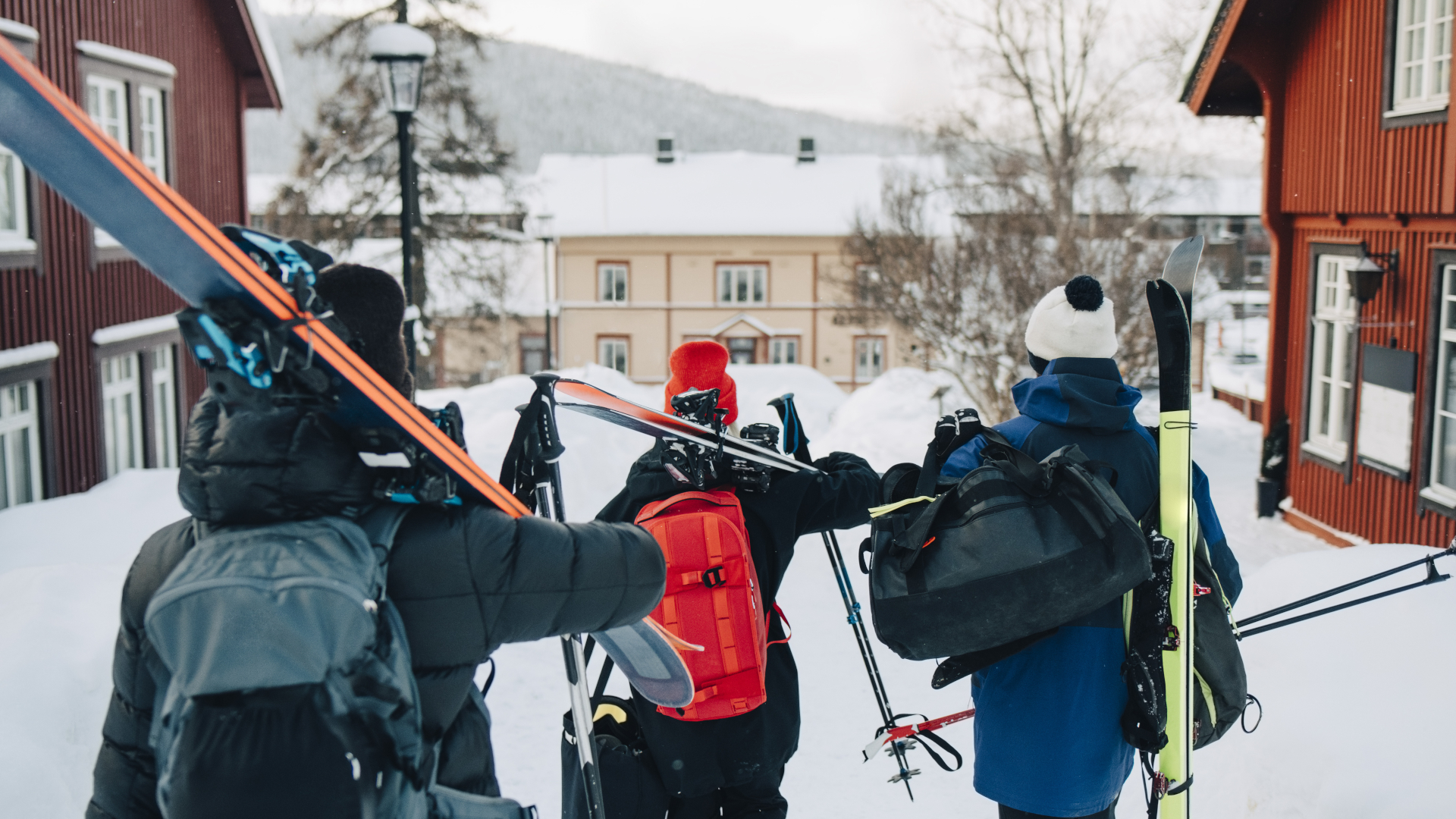
When you first start skiing, the reality of getting around in ski gear can be quite a shock compared to your expectations. If your fantasies involve you strutting around the resort in your best-fitting ski pants and jacket looking like a suave ski bunny, you might be quite disappointed to find out how awkward and clunky walking in ski boots actually is. If, in fact, you do end up on your backside on day one, which is possible, the mere thought of trying again tomorrow might currently be filling you with a mild sense of terror.
Do not despair, and do not skip a day on the slopes and sit at the bar instead. For the past 20 years, I’ve spent a lot of time walking around ski resorts. I nabbed myself a radio presenter job out of college in 2004 where I skied a different resort in Vermont every week of winter, then aged 27 I moved to Vail, Colorado where I lived for 11 years and now, well I get to write about skiing.
All this is to say, I’ve stumbled around in ski boots a lot, probably fallen over and blacked it out due to embarrassment, and definitely seen lots of other people trying, falling and trying again. My favorite was a slow motion backwards fall that I witnessed on West Meadow Drive during my first weekend in Vail that resulted in the fellow performing a full backwards summersault without dropping his skis. I know this story probably isn’t helping you, but I think of that moment often and fondly and thank him for so many years of entertainment.
Anyway, walking in ski boots really is difficult, and finding it so has no bearing on your ability to ski (or walk, for that matter). It just takes a little time, technique and practice to do it, so read on to discover how to walk in ski boots (without falling over).
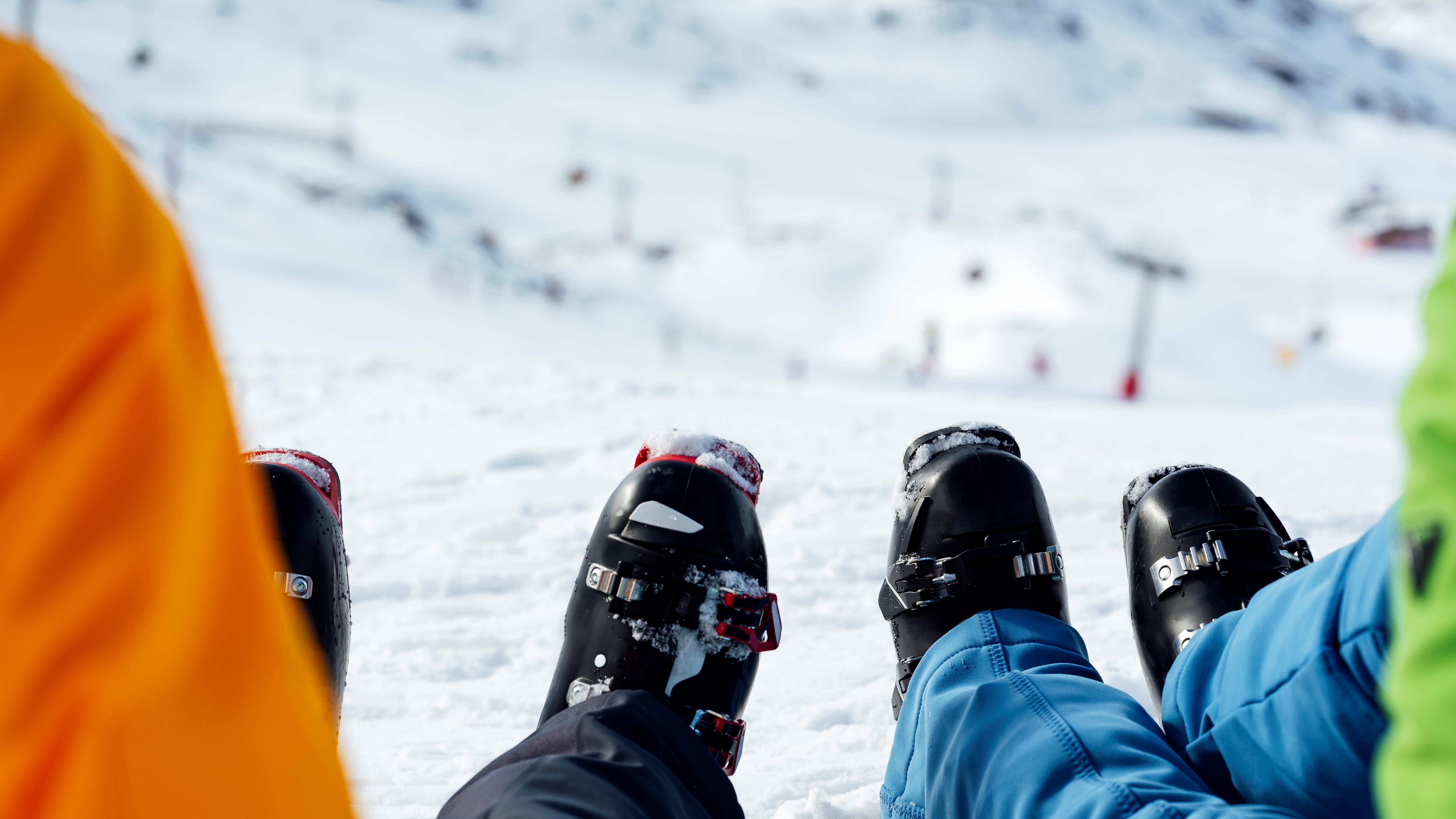
Why is walking in ski boots so difficult?
Walking in ski boots is tricky no matter who you are, it’s just that the people who make it look easy have had more practice than you. Ski boots are much heavier than your typical pair of shoes, so it requires more muscular effort to move in them, but more than that, they're extremely stiff.
When you’re walking normally, your ankle goes through nearly its entire range of motion to strike with your heel first then roll forward onto your toes, which also require the ability to extend at the joints. In ski boots, none of these movements are possible thanks to the rigid soles and uppers, so inherently, you shuffle like a penguin.
You’ve also got the fact that your ski boots are designed to put you in the right position for skiing, forcing you to bend your knees and send your shins into the boots. In a normal walking gait, your knees would move through straight, when your heel strikes and you move your weight forward, then bend as your leg moves back behind you.
All the latest inspiration, tips and guides to help you plan your next Advnture!
Basically, ski boots essentially prohibit practically all of the body mechanics that you typically rely on to walk without waddling, so you usually end up doing the winter waddle when you’re wearing them, and this isn’t helped by the fact you’re wearing bulky clothing and usually carrying gear like skis and poles.
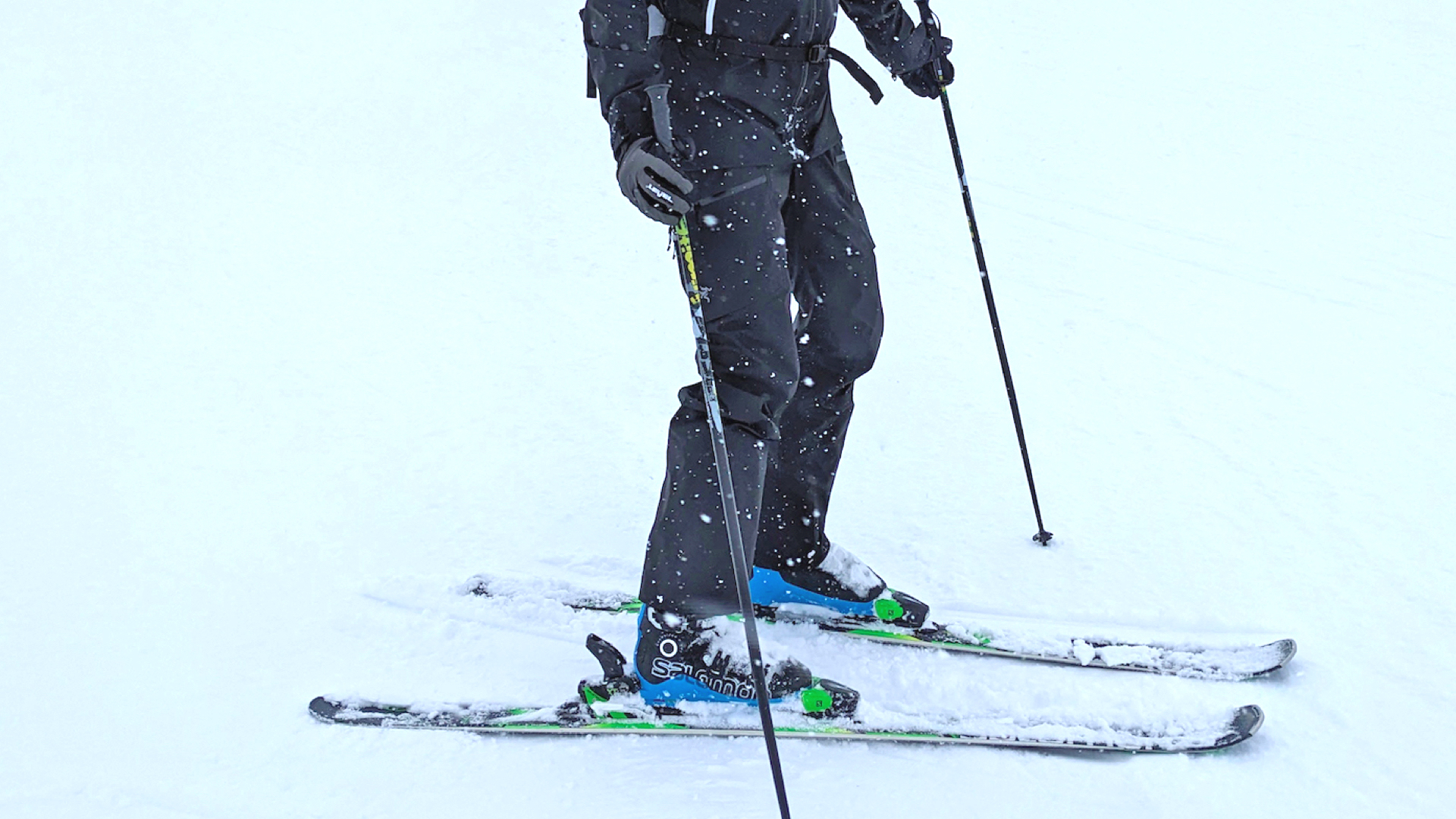
How to walk in ski boots
Honestly, walking in ski boots just takes a bit of practice, so be patient with yourself first and foremost. Fear of falling and either hurting yourself or looking foolish is only going to make matters worse, so take a deep breath and try the following:
1. Use walk mode
Before you set off, check to see if your ski boots have a walk mode. This is more common in touring boots than alpine boots, but yours might have a “switch” at the back that you can flip up that releases the ankle somewhat to give you a little more mobility. Just remember to flip it back down before you ski.
2. Take your time
If you rush when you’re walking in snow boots and the ground is icy, you’re far more likely to get it wrong and end up on your backside. You might think that going slowly reveals your ineptitude, but it’s the best way to get the hang of things and not hurt yourself. Slow down and be patient and let the rad bros stream by you on their way to catch first chair.
3. Exaggerate the heel toe action
Even though it is quite difficult, you still want to try to walk with your normal heel-to-toe gait. It won’t feel as smooth as when you do it in shoes – it will be harder work to swing your leg forward and there will be a big clunk as you move from heel to toe in fact – but it’s the best way forward. The easiest way to achieve it without much mobility is to really exaggerate the movement, which you’ll have to do to compensate for the weight of the boot anyway.
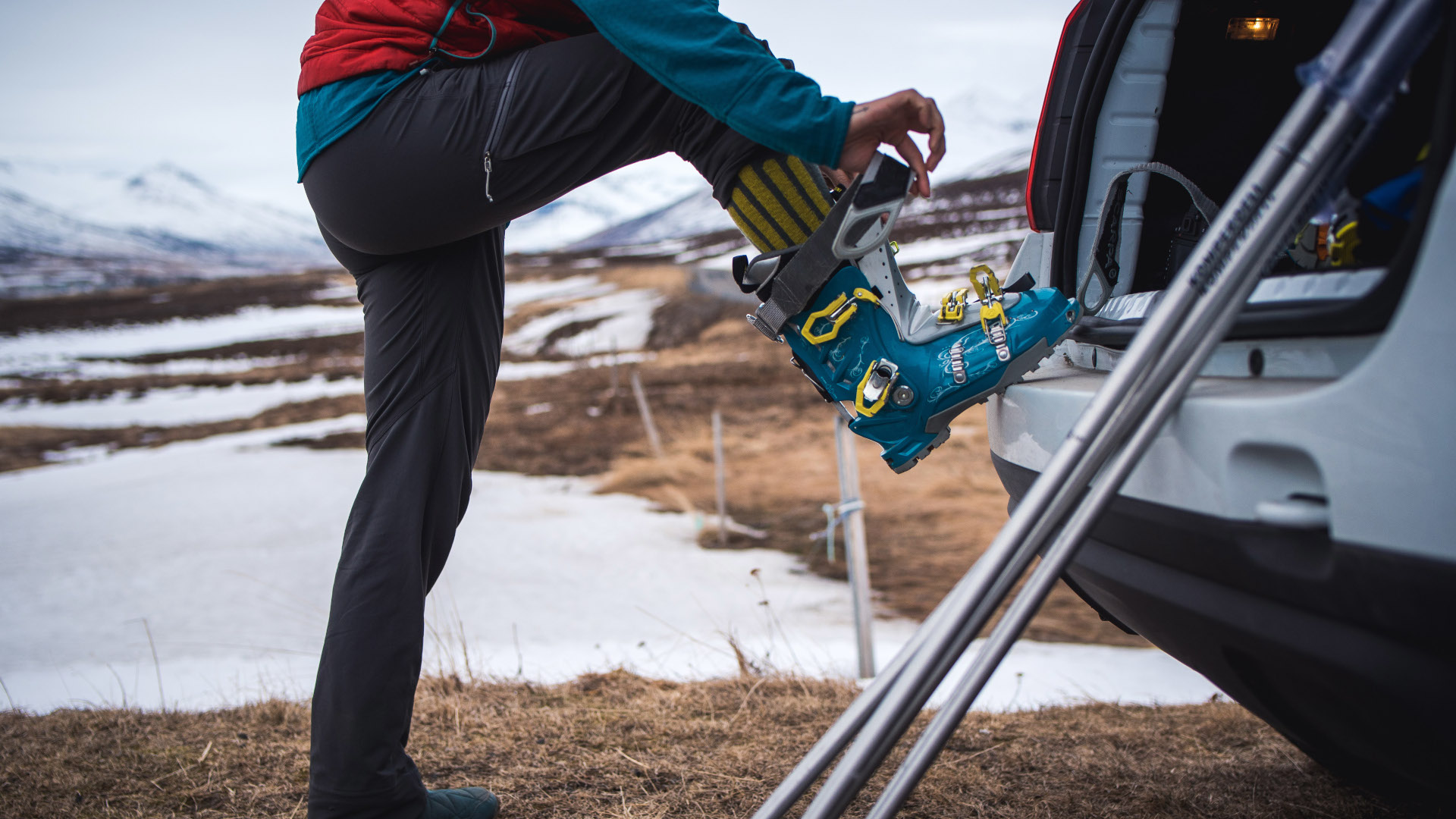
4. Soften your knees
Your knees are forced into a bent position anyway by the boots, and even though you can probably straighten them if you try, that only makes you walk extra peg-legged. Instead, soften your knees and try to walk with soft knees to reduce the clunkiness.
5. Don’t lean back
This is a really common error that often results in falls. Because the way you’re moving feels so foreign, you might find yourself leaning back to compensate for the awkwardness and weight of your boots. However, if you strike a slick surface while leaning back, you’re more likely to slip and fall backwards, so keep your weight centered over your feet.
6. Use your core
To compensate for the weight of your boots and the loss of mobility in your feet and ankles, make sure you engage your abdominal muscles as you move. This helps you to stabilize your torso and walk without swinging your pelvis wildly from side to side.
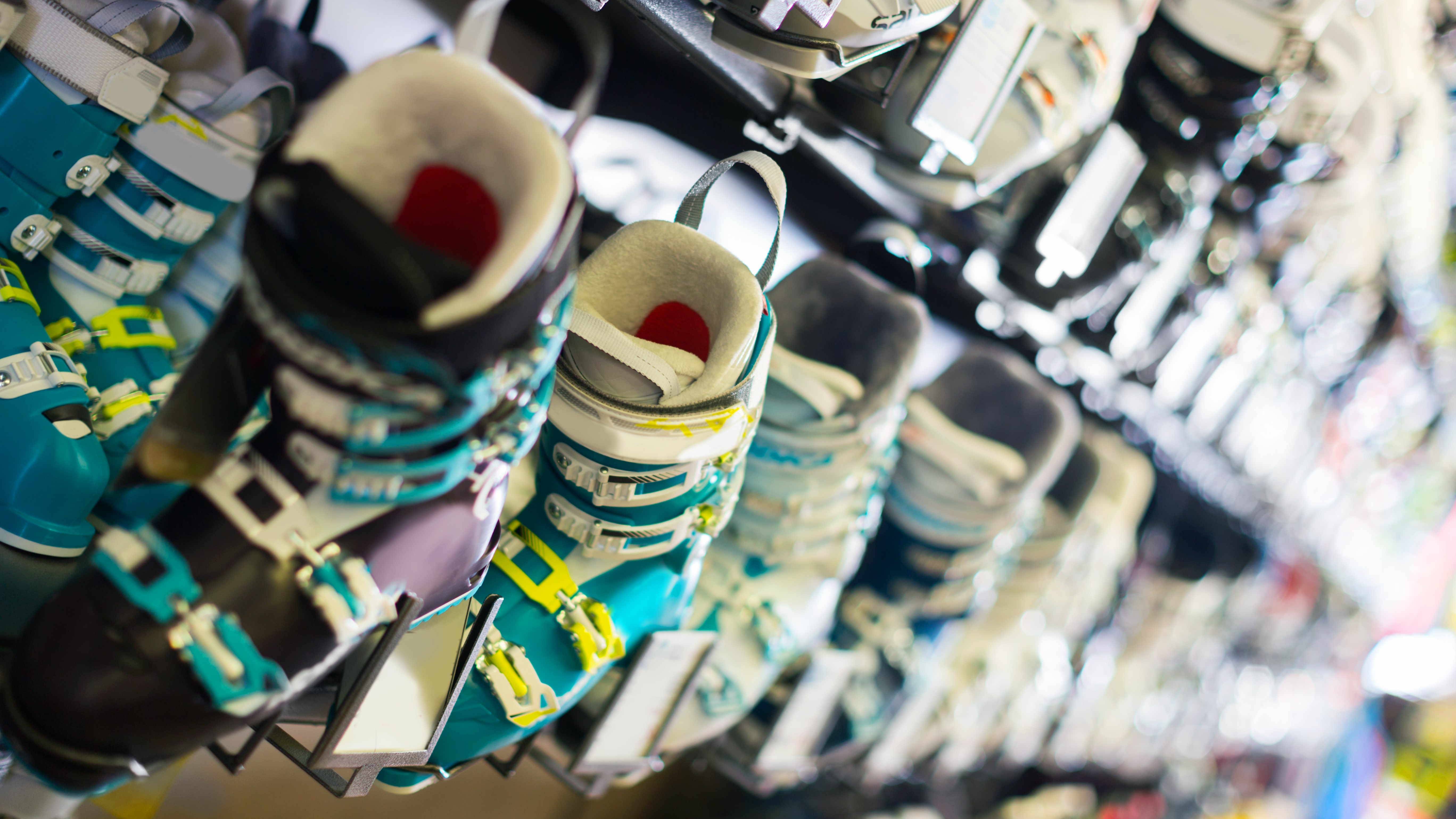
The above should help you build confidence when you’re walking on flat ground. If you find yourself heading downhill on a snowy slope, dig your heels in first. If you have to climb uphill, kick your toes in first. If you fall, remember no one will be able to identify you because your face will be hidden by your ski mask and ski goggles, and literally everyone is just happy it wasn’t them. Get up and keep hobbling.
Julia Clarke is a staff writer for Advnture.com and the author of the book Restorative Yoga for Beginners. She loves to explore mountains on foot, bike, skis and belay and then recover on the the yoga mat. Julia graduated with a degree in journalism in 2004 and spent eight years working as a radio presenter in Kansas City, Vermont, Boston and New York City before discovering the joys of the Rocky Mountains. She then detoured west to Colorado and enjoyed 11 years teaching yoga in Vail before returning to her hometown of Glasgow, Scotland in 2020 to focus on family and writing.

